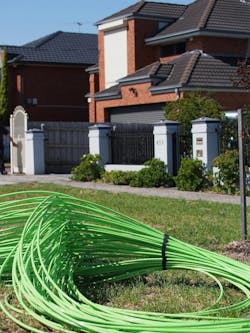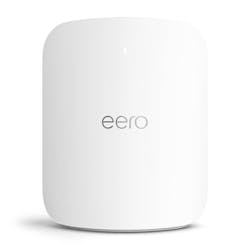Astound Broadband continues to pivot to fiber-based broadband
Astound Broadband took a less-traveled approach to its fiber broadband journey, leveraging diverse experiences from assets it had accumulated over the past two decades.
The cable MSO traces its history to the late 90s so-called cable overbuilder craze. Creating the Astound footprint resulted from acquiring three aggressive cable overbuilders—Wave Broadband, RCN, and Grande—and other smaller cable providers.
In May 2017, TPG Capital acquired Wave Broadband from Oak Hill Capital Partners. It then merged the company with RCN and Grande Communications to create the sixth-largest cable operator in the U.S. In August 2016, TPG Capital acquired RCN and Grande Communications Networks and then led the acquisition of Wave.
Later, in August 2021, Stonepeak, completed the $8.1 billion acquisition of Astound Broadband.
Astound has taken the elements of these acquisitions and incorporated best practices for its fiber broadband approach. As the sixth largest cable MSO, these acquisitions gave it a sizeable fiber footprint built with newer infrastructure, including a deep fiber footprint previously built in the late 1990s.
“We purchased RCN and took it private and three years later added Grande Communications, both of which were overbuilders,” said Jim Holanda, CEO of Astound Broadband. “They had networks built in the late 1990s and early 2000s, so they were built with the latest technology and three times the amount of fiber that traditional companies use.”
Today, Astound Broadband operates in 12 states and 9 of the top 30 DMAs nationwide. “We are now the sixth largest cable MSO with 4.2 million homes passed and 1.1 million customers,” Holanda said. “We’ve been at this for 14 years and are now on our third owner with Stone Peak Partners.”
As the company brought the three distinct providers together, it was driven to create a familiar brand encompassing Grande, RCN, and Wave.
“For a long time, we have been doing business as RCN, Grande and Wave because the brands are beloved,” Holanda said. “When we started buying all of these other companies, we could not keep all the independent brands, so we united everything under Astound.”
Fiber edge-out strategy
While the notion of cable operators building out fiber-to-the-home (FTTH) networks is gaining momentum, Astound has the needed experience to make the transition work.
Astound has been edging out its networks for over a decade to reach new neighborhoods adjacent to its existing footprint. This process began with HFC and shifted to FTTH builds, starting with GPON for single-family homes, multi-family units (MFUs), and multi-dwelling units (MDUs).
“We had been building fiber networks for business customers for a decade and longer,” Holanda said. “It was about five years ago when we started to pivot from HFC builds to fiber starting with GPON.”
Having built fiber networks for carriers and businesses, Astound had the skills and experience to pursue FTTH builds.
Holanda emphasized that the key focus is to deliver a good experience for every customer regardless of whether the medium is fiber or HFC.
“None of this is new to us and is something we’ve always done because it’s a good growth engine for us,” Holanda said. “Regardless of the technology we use, it does not skew the results because customers just want a great broadband service paired with high-quality customer service.”
Pivoting to FTTH
Astound pivoted towards FTTH because of several factors, including the desire to upgrade an aging network infrastructure.
The provider began its FTTH journey seven to eight years ago. At that time, it had inherited legacy Marconi fiber broadband equipment in the Grande territory. Marconi’s platform consisted of fiber to an optical network unit (ONU) architecture, which would go over a passive coax network serving 28 homes.
This drove it to start replacing this part of the network with a GPON-based fiber broadband network.
“Since the Marconi equipment was failing and we couldn’t get parts for it, we chose to upgrade it to a fiber to the home (FTTH) network,” said Patrick Murphy, EVP and CTO of Astound Broadband. “We overlashed the last 28 homes with fiber, put a network interface device (NID) at the location of the optical network unit (ONU), and pulled it back to the roadside cabinets where the optical line terminals (OLTs) would sit.”
However, Astound Broadband continued to enhance and build out its HFC network. “We continued for a few years to build out HFC because we were doing fill-in areas surrounded by HFC networks,” Murphy said. “These HFC networks consisted of 3,000 miles of plant.”
At that time, the company thought it was not feasible to do one-off builds of FTTH with 100 miles of plant. Murphy said, “In retrospect, we would have done it now if it pops up.”
Fiber’s operational benefits
When Astound Broadband embraced FTTH, it saw various benefits, including a drop in the price of fiber.
Murphy said lower prices helped Astound and the entire broadband provider community roll out FTTH services.
“When we decided to embrace fiber fully, we saw prices drop considerably,” he said. “The whole industry embraced this fiber three or four years ago.”
When Astound Broadband began rolling out fiber in its last-mile network, any network built with 50 homes or more would be fiber-based.
As it edges out its network into adjacent communities near its network, which has 2-7,000 homes, it will build them via fiber.
“We’ll build over 100,000 units a year right now with the ability to ramp up as we choose,” Murphy said.
Like other providers serving MDUs, Astound faces many situations requiring specific wiring.
In some older buildings, it must account for the fact that many of the existing locations it serves may have existing HFC.
“The only time where we don’t do FTTH is when it’s an MDU that has coax throughout, and it’s difficult to post wire the building,” Murphy said. “In those cases, we’ll use the house wiring to a common point.”
Astound Broadband uses flat-leaf fiber and retrofits many buildings with crown molding elements that can route the fiber. The majority of the new MDU buildings it serves will all be fiber-based.
The provider also leverages a toolbox of other technologies, including WaveG service, an Ethernet product offering 1 Gbps or a 100 Mbps symmetrical speed service.
WaveG takes the service from fiber to fiber or microwave to a router. That router feeds the building through a series of switches that fulfill the customer.
Wi-Fi is also a factor in Astound Broadband’s MDU footprint.
In 2022, Astound purchased FastMesh Internet, a provider of wireless residential Wi-Fi services to apartment buildings and housing communities in the Pacific Northwest. The company serves thousands of customers within a growing base of over 130 MDU buildings throughout Seattle, WA, and Portland, OR.
The acquisition enabled FastMesh and Astound to expand the availability of FastMesh’s managed services to MDUs in all Astound Broadband markets. FastMesh is installed at zero cost to MDU building management and owners. Building residents sign up right from their computers, with no modems or routers needed, meaning no technician visits are required.
Astound Broadband has continued to use FastMesh individually and combine it with other technologies to serve an MDU. There are even some buildings where we do the two systems side by side. They would then have a dedicated connection to an Ethernet port.
“We had our WaveG folks work with where we’re doing the design on the buildings, putting in the wired mesh, and having access points in the common units as well as in the units themselves,” Murphy said. “These will offer 1x1 speed, and we’re working on getting those to a 2.5 Gbps symmetrical speed.”
HFC network evolution
While FTTH is a crucial focus of Astound, the cable MSO has been an early adopter of enhancing its HFC network.
Today, 86% of Astound Broadband’s footprint is still HFC; the other 14% is FTTH or the Ethernet MDU product.
Due to its nimble nature, Astound Broadband and its predecessors were among the first cable MSOs to roll out DOCSIS 3.0 across its entire territory in 2010. Later, in 2016, it rolled out DOCSIS 3.1 over 18-24 months.
Like other cable MSOs, Astound Broadband is looking at various network topologies. “Similar to others in the cable industry, we’re also evaluating the right technology,” Holanda said. “There’s no one size fits all.”
Technology choice is often driven by competitive dynamics in a particular market.
"Since we have all of these technologies out there working fine, the customer does not care and wants the service to work well at a fair price with great customer service, but competitive threats and technology investments get taken into consideration on a market-by-market basis,” Holanda said. “The nice thing about being private equity backed is we have a long time frame to look at investment returns on the network.”
XGS-PON focus
When it comes to FTTH, Astound Broadband’s focus is on XGS-PON.
To start the XGS-PON network implementation, the service provider conducted a bake-off of various vendors' PON equipment. It settled on Calix, which it had been using for its GPON network.
Having an embedded base of GPON in its FTTH network, it was vital that it could run the XGS-PON network in tandem with GPON. This scenario lessens the impact not only on Astound Broadband but also on existing FTTH customers.
“With Calix, we could run the GPON and XGS-PON systems simultaneously without forcing the change out of all the equipment at the customer’s home,” Murphy said. “This allows us not to force something on customers but lets them take it faster when they choose.”
With this process well underway, Astound Broadband has roughly 260,000 homes to upgrade to XGS-PON. It has about 30,000 homes left to do, which it expects to be done by either August or September this year.
“Everything we have with our FTTH networks will be 10 Gbps capable,” Murphy said. “We’ve also changed the ONTs to 10 Gbps; we can offer lower speeds.”
This drive is reflected in the launch of its 5 Gbps symmetrical service for residential and small business customers. Astound 5 Gig is available in many of Astound Broadband’s fiber markets, including portions of California, Illinois, Maryland, New York City, Oregon, Pennsylvania, Texas, and Washington.
Astound Broadband’s 5 Gbps symmetrical service is powered by eero’s mesh Wi-Fi 7 system, Max 7, which can accommodate more than 200 devices and deliver wired speeds of up to 9.4 Gbps and wireless speeds of up to 4.3 Gbps.
The cable MSO is hardly alone in its desire for 5 Gbps. Traditional telcos like AT&T and Shentel and competitors like Google Fiber, Wyyered Fiber, and Ziply have previously introduced 5 Gbps services across their respective footprints.
Murphy said offering a 5 Gbps symmetrical fiber broadband service initially gives Astound “something to grow to, unlike our competitors.”
Leveraging network familiarity, experience
While a shortage of fiber installation labor issues will always loom for broadband providers, Astound Broadband maintains it's not an issue.
The cable MSO said it does not see workforce shortages as an issue because many of the people who built the previous Grande, RCN, and Wave networks are still with the company.
“Interestingly, labor and contractors have not been a material issue for us,” Holanda said. “We’ve been building fiber networks for over a decade.”
Holanda said that this experience of building fiber networks works well in its favor. “The people that built the Grande and RCN network in the late 90s are still with the company,” he said. “We can consistently build around the country because we still have relationships with the pole owners, including incumbent telcos and power companies.”
Like other cable operators, it leverages the best training practices from SCTE and has been training its people. This is essential because all its acquired assets have different nuances, so Murphy and his team share best practices across the company.
Besides its relationships with pole owners' permitting offices, Holanda said its build approach is another critical factor. “We don’t focus on one geographic area because one river crossing can hold up a job for seven months, so we derisk our builds by building everywhere,” he said.
Murphy agreed that a decentralized building approach would allow "us to meet timelines and get local markets involved in the builds, taking priority at getting their stuff done and using people closest to the projects.”
About the Author
Sean Buckley
Sean is responsible for establishing and executing the editorial strategy of Lightwave across its website, email newsletters, events, and other information products.




